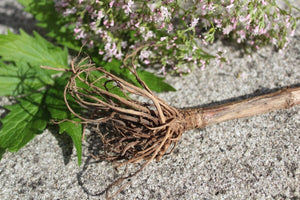Your Spring Planning Guide: 6 Steps for Successful Summer Gardens
Seasonal gardeningWell-planned gardens save a lot of work, trial and error, and money. Impulse shopping for plants and materials can be fun, but if you don’t have a plan, your seeds and new plants may go to waste. Spring planning is a good way to get a head start on the summer growing season. It doesn’t take a lot of time, but it will help you to anticipate your needs ahead of time and set your garden up for success.

6 Steps to Plan Your Summer Garden
Garden planning is an excellent way to improve your gardening success. By taking the time to plan what, where, and how things will run much more smoothly.
Take Stock
Gardening planning starts with taking a look at what you have to start with. If you had a garden the year before, look over what worked well and what you want to improve. Consider what your budget is, and what you’ll need to buy for the upcoming year.
Do you need to do any maintenance on fences, irrigation systems, or equipment? Will you need to replace supports, buy netting to keep the birds out, or set up a new raised bed?
Consider both cost and time. Some things that might seem to take extra time or have an upfront expense such as DIY Tomato cages, will save you time and expense later.
Choose the Right Seeds
If you’re planning a flower garden, you’ll want to consider factors like bloom times, colors, and heights so that you can have a good variety. Think about harvest times for vegetables and whether you’ll want to do any succession planting. Companion plants can improve the yield and success of your garden, so choose plants that grow well together.
The right seeds are ones that grow well in your location and have high germination rates. Heirloom seeds from Sow Right Seeds are guaranteed to grow. You'll find a wide selection of flowers, herbs, and vegetables that are sure to be your garden favorites.
Start Your Seeds
Consider your climate, frost times, and the needs of your seeds when considering the timing of starting seeds indoors and outside. Don’t forget to allow time to harden off any seeds you’ve started indoors so that they get the best start.
Our Seed Starting Planner can help you create a very useful calendar. Enter your zip code, and you'll get the dates when it's time to start planting seeds indoors or outdoors for your location.
Starting seeds indoors will increase your growing season. It's also an excellent way to control the environment and get plants off to a thriving start.

Plan Your Garden Layout
Consider the light needs of your plants, how much room they will take up when they are fully grown, and how far away your garden is from your house, your watering system, and your tool shed. Drawing things out on a sheet of paper can help you to visualize your space.
Note: Don’t make the mistake of simply repeating last year’s garden. Crop rotation, even in a small space, is important to reduce disease and balance nutrients in the soil.
Now is the time to move things around for an even better garden. If you found one location to be too shady, you can change locations or trim back trees.
As you sketch out your garden plan, you can plan where to put the sun-loving peppers as well as the shade-tolerant coleus.
Clear Beds and Cultivate the Soil
Garden planning also includes getting your soil ready for the new plants. Soil is the foundation of a healthy garden. Making amendments and adding compost before planting will get your garden off to a healthy start.
Clear cover crops and turn under the plant residue as green manure. Add any needed soil amendments like compost to enrich your soil.
Whether you have clay soil or sand, adding compost is always a good option for creating fertile garden soil.
Fully remove any weeds that have taken up residence. You can cover an area with black plastic or cardboard to smother weeds. Or use our favorite weeding tools to remove weeds before and after planting.

Plan for Irrigation
Save yourself a lot of work by setting up an irrigation system ahead of time. A simple garden hose or watering can might be appropriate for a small space but will be exhausting and inefficient in a larger garden.
Drip irrigation is an effective watering system. With small holes in simple pipes, water can slowly seep into the soil right at the root of the plants. It takes some time and planning upfront, but you'll appreciate the convenience of an irrigation system over the whole gardening season.
These six steps will guide you through your garden planning. Just like most things in life, planning ahead will save you a lot of frustration and set you up for success in the garden. It’s all about anticipating your needs ahead of time and saving time, energy, and money. And, of course, having a lot more fun!
Popular Posts
-

How to Grow Valerian Root from Seed to Harvest
-

Winter Wonder Checklist: December Garden Tasks You Want to Do Now








Leave a comment